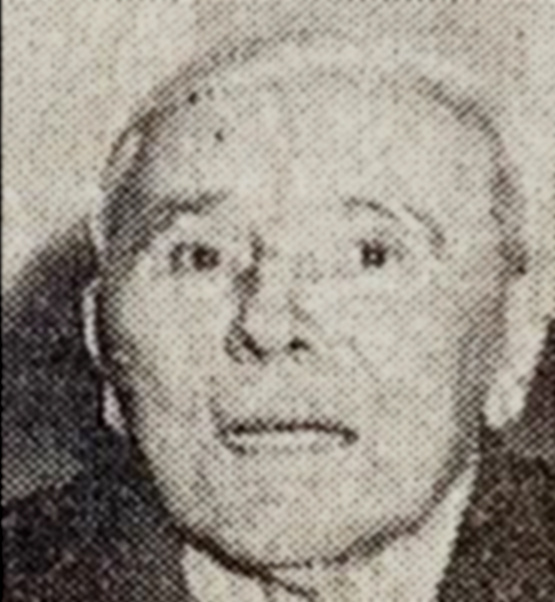Name
Charles William Brett
Conflict
First World War
Date of Death / Age
Rank, Service Number & Service Details
Trooper
L/1648
The Queens Lancers
16th
Awards: Service Medals/Honour Awards
1914 (Mons) Star (with Clasp & Roses), British War and Victory medals
Cemetery/Memorial: Name/Reference/Country
Headstone Inscription
Not Researched
UK & Other Memorials
Pre War
Charles William Brett was born on Tuesday 24 July 1888, the only son of Charles & Annie Brett (nee Claridge) who were then living at 290 High Street, Watford, Hertfordshire. His father, who had been born in Sawbridgeworth, was to have a long and distinguished career in the Hertfordshire Police force, retiring as a Sergeant.
On Monday 8 February 1909, Charles, who by now was 20 years-old and working as a Fireman on the Great Eastern Railway, enlisted in the British army at Bishops Stortford, becoming a Trooper with the 16th (The Queens) Lancers, and being given the Regimental number L/1648. By 1910, he was stationed at Weedon Barracks, Northamptonshire, and it was here that he was to suffer some injuries. Firstly, he was kicked in his right thigh by a horse on 18 January. Then, on 26 July, he suffered a facial injury after a fall from a bicycle, which required a three day stay in hospital. Records show that by 1911, he was one of 153 members of the Regiment who were living in the barracks.
In March 1914, the Regiment were stationed at The Curragh Barracks in Ireland, where they were involved in what was known as the Curragh incident, sometimes referred to as the Curragh mutiny.
Wartime Service
Following the outbreak of the First World War on 4 August 1914, the Regiment left Curragh on Friday 14 August, and made their way to Dublin, where they boarded the S.S. Indian, and undertook a two day journey to Le Harve, France. Upon their arrival on the Continent, the Regiment moved to bivouacs at Cousolre close to the Belgian border, moving to Fontaine-l'Eveque the following day. Here, they were involved in the defence of the city of Mons and by Wednesday 26 August 1914, were covering the British infantry retirement from Le Cateau.
The Regiment served continuously in both France and Flanders as part of the 3rd Cavalry Brigade with the 5th Lancers. Brigadier (later General) Gough, commanded the Brigade.
Sunday 21 February 1915, was an unusually disastrous day for the Regiment. The enemy's trenches ran parallel to those of the Lancers, at a distance varying from 15 to 500 yards. In front of “D” Squadron was a deep ditch which ran from the German trench to that occupied by the Squadron. It had been suspected for some days that the enemy was running a sap at the bottom of this ditch, and a close observation had been kept on it, but no sign of anything of the sort had been discovered. It turned out afterwards that the Germans had run a sap half way down it, but had turned off at a sharp angle and continued the sap underground until it ran under the centre of the trench of “D” Squadron, where three mines had been placed at the end of it. It was afterwards ascertained from prisoners that the mines had been laid some days before the Lancers took over the trench, but that the explosion had been delayed with the intention of catching the relief when they were taking over on the 18th.
In 1916 they were in Belgium and took no part in the Battle of the Somme.
During January 1917 there was no serious fighting in the northern sector, though there were some minor local attacks made to rectify the line in several places. Charles Brett, home on leave at the time, married his sweetheart, Ellen Reed of Bishops Stortford, on Friday 19 January 1917 in Harpenden. Their first child, Ena, was born in Bishops Stortford on Saturday 6 October 1917.
After returning to France, Charles remained with the Regiment until Thursday 5 April 1917, when they marched from their billets and were employed in a reconnaissance of the enemy's line. Beyond some shelling, there was no actual fighting, but the weather was atrocious, with frequent snowstorms, and shelter was difficult to find as every village had been carefully destroyed. A few days later, on Monday 9 April 1917, the Battle of Arras began. It was on this day, as British troops headed towards the Hindenberg Line in a major assault, that Charles Brett was injured, after falling from his horse, causing a contusion on his back. He was evacuated to a British General Hospital at Camiers, and from there was transported to the Grange Street Hospital in Manchester. He was later moved the Runnymeade Hospital, Manchester, to assist his recovery.
Having returned to the United Kingdom on 22 April 1917, Charles would remain stationed at home, being no longer fit for overseas service. He was posted back to the Curragh barracks in Ireland, where he was engaged on training duties for the remainder of his service. On Sunday 16 March 1919 he was discharged from Army service.
Having left the military, Charles joined the ranks of the Metropolitan Police Force on Monday 24 November 1919, and moved into a home at 8 Dean Street, Forest Gate, East London. A little over a year later, on Thursday 30 December 1920, a second daughter, Irene, was born to the couple. This was swiftly followed by their third and last child, Nelly, who was born the following year.
Additional Information
A more detailed biography can me found in our Archive at: www.hertsatwar.co.uk/archive/hertfordshire-men-women-individuals-stories/charles-william-brett-biography-survivor
Acknowledgments
Paul Johnson



